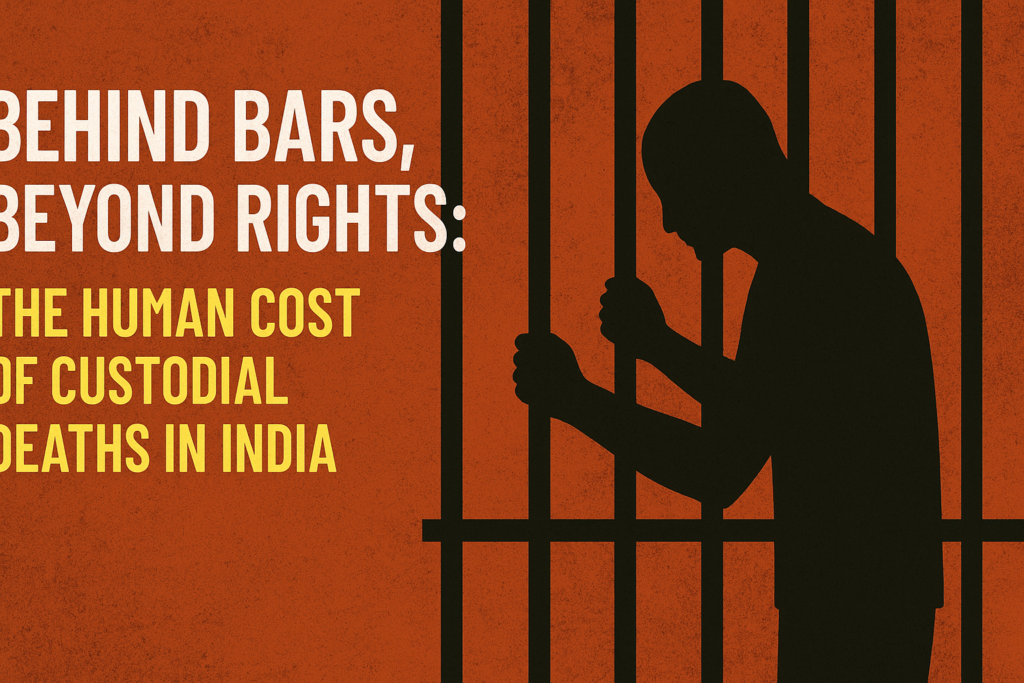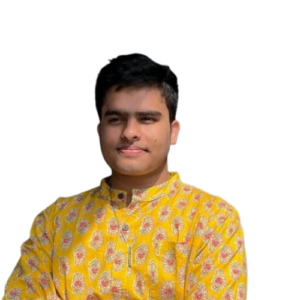
This short article has been written by Darsh Goyal, a third-year law student at O.P. Jindal Global University.

INTRODUCTION
In a democracy that owes dignity, justice, and equality to everyone, the very notion of custodial death by the instruments of those pledged to safeguard goes against the very essence of constitutional values and human rights. When the keepers of the law turn into the violators, it is not merely an adjudicatory failure but a moral tragedy. India’s custodial deaths reveal a harsh truth: that the most vulnerable, when held in detention, tend to lose not only their freedom but their lives without trial, without justice, and without having been heard.
TYPES OF CUSTODY
Police Custody refers to the accused being detained in a police station lock-up following arrest, typically for investigation. It gives police to question the suspect, but only for a maximum of 24 hours (not including time taken to reach court), after which the individual has to be produced before a Magistrate. If the accused is a juvenile, he/she has to be produced before the Juvenile Justice Board. The police can request an extension, but additional custody needs to be approved by the judiciary. This custody is primarily for investigation and prevention of further offences. Judicial custody refers to the accused being taken to prison by the order of the Magistrate. In this, the suspect is under the observation of the court, and the police cannot interrogate without specific orders from the court. It is usually ordered when additional police custody is not required or in case of denial of bail. Based on investigation and charges court determine the period of judicial custody which can exceed 15 days.
ANALYSIS
The data given by the Ministry of Home Affairs (MHA) in the Rajya Sabha, in which India reported 669 custodial deaths between April 1, 2017, and March 31, 2022. Of these, 175 cases were reported in 2021–22 alone. The National Human Rights Commission (NHRC) suggested monetary relief in 201 cases, totaling more than ₹5.8 crore, but disciplinary action was suggested in just one case ,a stark indication of the entrenched culture of impunity. Though the Centre argues that “police and public order” are within state domain, such apportioning of power frequently creates a void in accountability. The role of NHRC, as important as it is, can only go up to suggesting recommendations and spreading awareness, and lacks any powers of enforcement.
Recently in the case of Somnath Suryawanshi (Maharashtra, 2024) a law student mysteriously died in judicial custody. Authorities attributed cardiac arrest, but the autopsy showed blunt injuries, indicating custodial violence, even in section 196 of Bharatiya nyaya suraksha Sanhita which tells the procedure for a Magistrate’s inquiry when a person dies or disappears while in custody or when rape is alleged on a woman in custody yet the justice is not in sight.
Now what’s the relief for the victim, the compensation has been viewed as an appropriate remedy for the death in police custody, which violates the article not only in spirit but also in letter on the right to life, as guaranteed under article 21 of the Indian Constitution. This same view has been expressed by the Supreme Court in Nilabati Behra v. State of Orissa where Nilabati Behra wrote a letter to the Supreme Court seeking the court’s directions as a writ petition under article 32 of the Constitution for payment of compensation for the death of her son Suman Behra , who died in police custody in District Sundergarh (Orissa). The Supreme Court gave an amount of Rs. 1,50,000 to the deceased’s mother as compensation and made it clear that there cannot be any question of the availability of the defense of sovereign immunity in case of constitutional remedy. Stating further that the court has wide powers under art. 32 of the Constitution enabling it to ever award compensation in appropriate cases where this is the only mode of redress available for contravention of fundamental rights.
EFFECT ON HUMAN RIGHTS
Deaths in the custody goes against international human rights norms, such as the Universal Declaration of Human Rights (Article 5) and the International Covenant on Civil and Political Rights (Article 7), both banning torture and cruel, inhuman, or degrading treatment. The recurring incidents of custodial deaths negate the state’s duty to preserve life and promote accountability, creating havens of fear instead of justice in detention centers, it is also a major violation of article 21 of Indian constitution which gives you right to life and dignity .Torture, cruel treatment or medical error are major reasons for deaths in state custody and shows a breakdown in the legal system and decrease public trust.
Custodial deaths are not only legal violations, they are deep moral lapses that raises the question on the foundations of a democratic and rights-based state. Despite constitutional guarantees and international commitments, India continues to experience deaths in custody with minimal accountability and delayed justice. These incidents expose systemic weaknesses ranging from poor oversight to absence of political will and allow a culture of impunity to thrive. Compensation, though required as much as possible, can never restore lost lives or undo the damage inflicted on families.What is really required is thorough police reform, independent investigation bodies, and passage of an anti-torture law. Securing human rights in detention is not primarily about safeguarding the accused , it’s about upholding the integrity of our justice system and ensuring justice for everybody. The state should not only be a force of law enforcement but also a protector of life and dignity, particularly for the people under its care.






